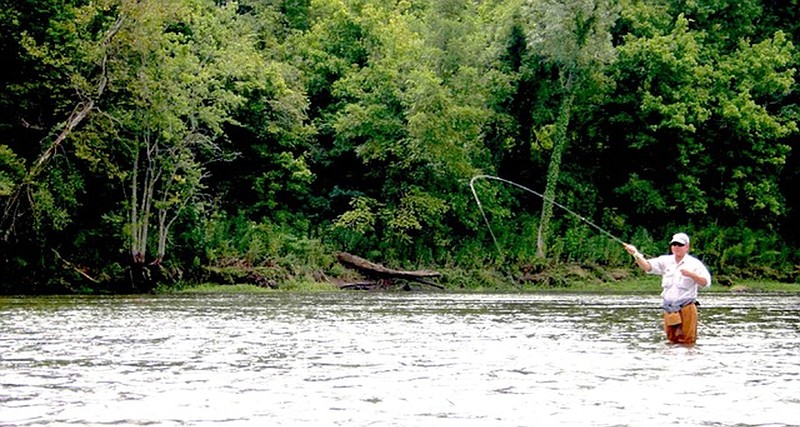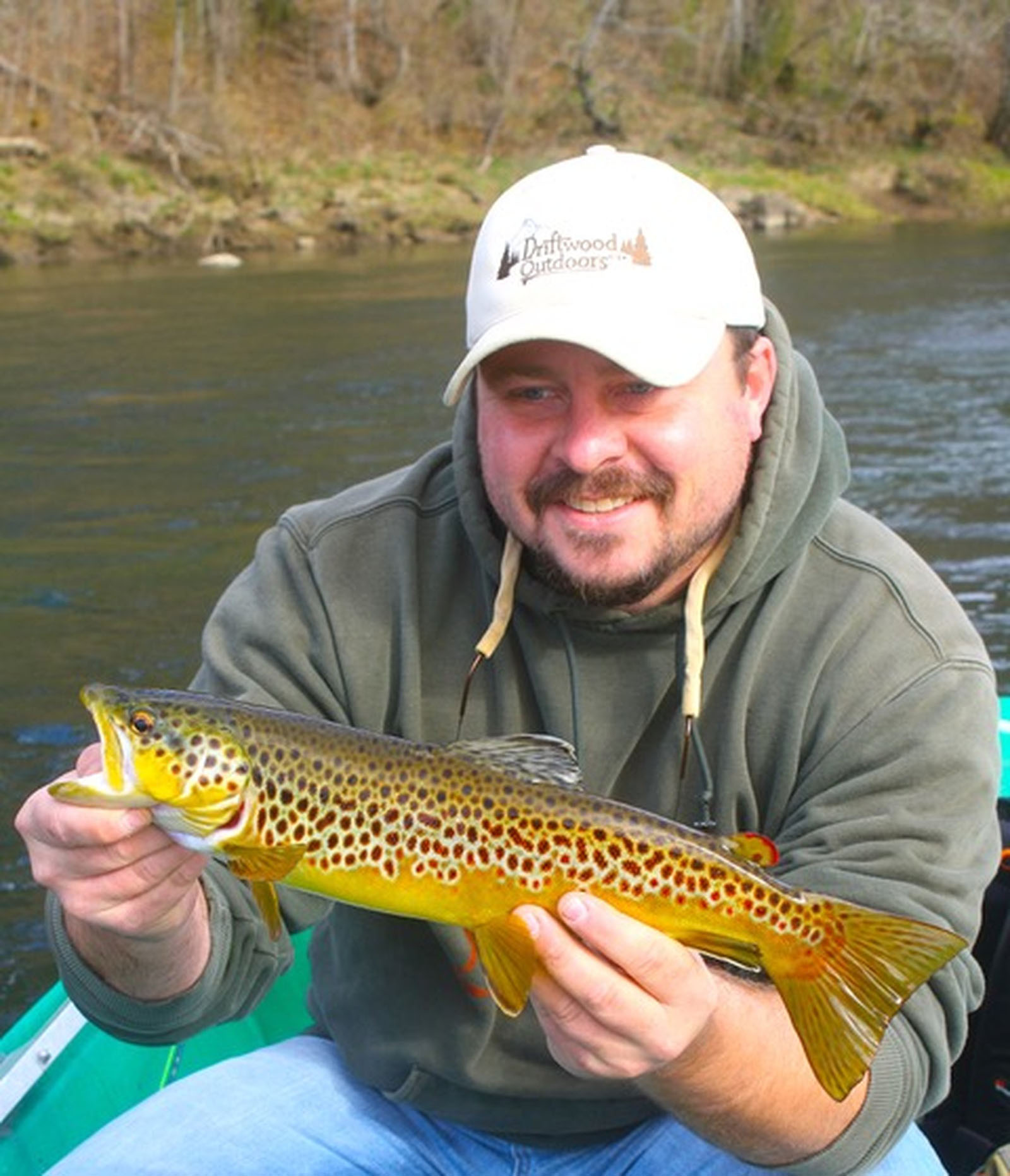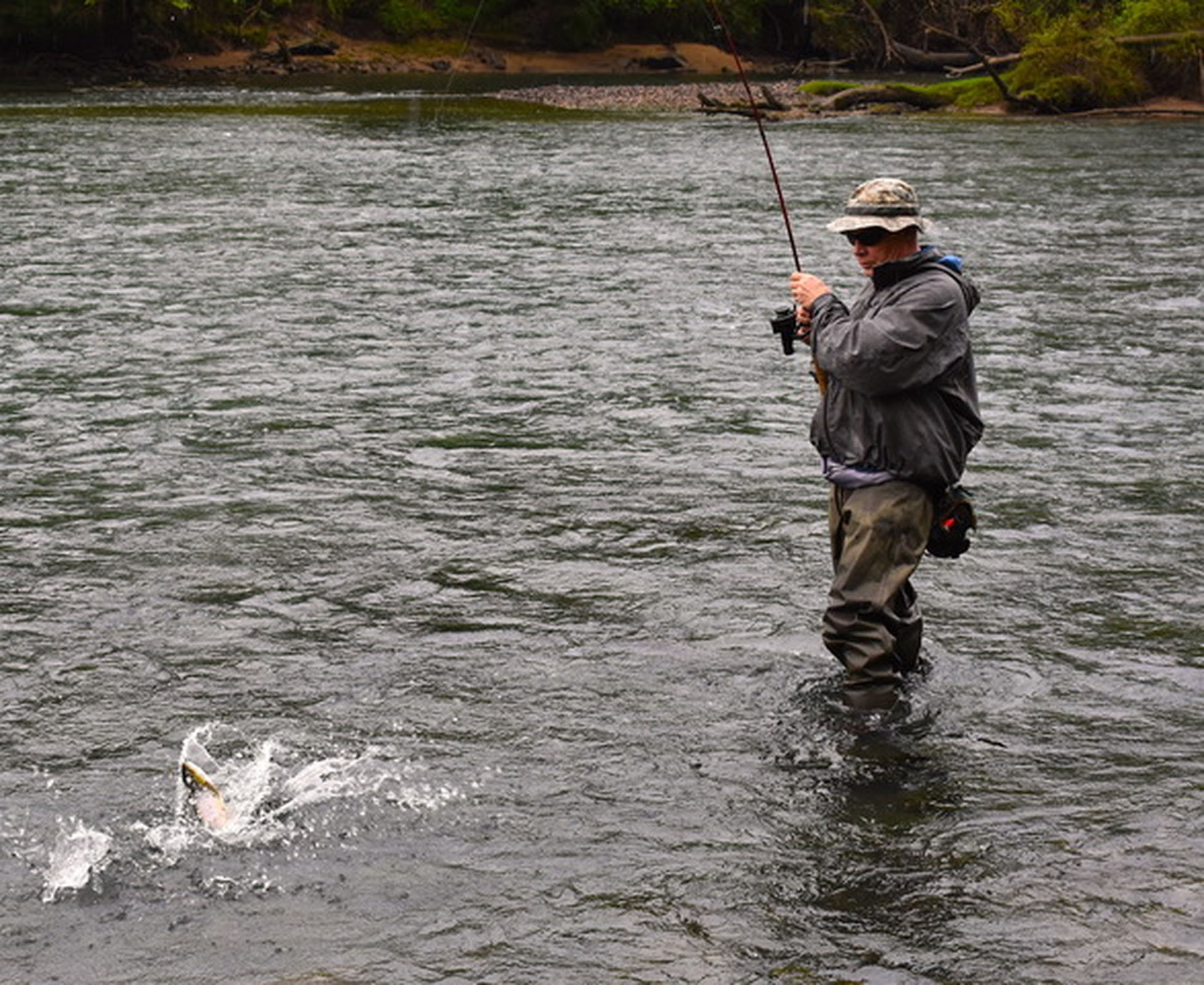New research shows that the Little Red River is a wildly productive brown trout fishery, but anglers might hold some major misconceptions about its potential.
Derek Owens, a graduate student and research assistant at the University of Arkansas at Pine Bluff, is in the final stages of the most comprehensive evaluation ever conducted of the Little Red River's trout fishery. Much of the research centered on spawning habitat and spawning productivity on the river, which in 1991 produced a 40-pound, 4-ounce brown trout that held the all-tackle world record for nearly 20 years.
Trout are not native to Arkansas. The federal government introduced them to several tailwater rivers after dam construction obliterated native warm-water fisheries downstream.
The Arkansas Game and Fish Commission and the U.S. Fish and Wildlife Service never stocked brown trout in the Little Red River. Anglers introduced brown trout to the Little Red through an innovative method that propagated fish in the wild. Unlike rainbow trout, which are hatched, raised and fed in hatcheries and released as catchable size fish directly into the river, brown trout hatch in the wild and exhibit wild feeding and behavioral characteristics.
Dr. Steve Lochmann, a professor in the Aquaculture and Fisheries Center at the University of Arkansas-Pine Bluff, said the brown trout fishery in the Little Red does not require any direct involvement from the Game and Fish Commission to maintain "a really, really nice brown trout fishery."
Trout inhabit a 30-mile section of the Little Red River below Greers Ferry Lake that's known as the Greers Ferry Tailwater. A popular and enduring perception among anglers is that spawning habitat is limited in the Greers Ferry Tailwater, and that special regulations are necessary in key areas to prevent anglers from damaging spawning areas.
Brown trout spawn in very specific areas, and they create spawning beds called "redds." An optimum spawning site contains several characteristics, Owens said. It should be 1 to 1 1/2 feet deep. It should contain an abundance of gravel, with individual rocks measuring 1/2- to 2 1/2 inches. Optimum current speed is about 1 foot per second.
"A foot per second is about as fast as a baby crawls," Owens said.
On a location with these characteristics, a female brown trout will turn on her side and rapidly strike the riverbed with her caudal fin, Owens said. This dislodges gravel which the current will carry downstream. Displacing the gravel forms a shallow pit into which the female trout deposits her eggs.
After a male brown trout fertilizes the eggs, the female repeats the gravel thumping activity above the pit. This dislodges gravel that settles on the pit and covers the eggs.
"Not all of the eggs can be laid in one particular pit," Owens said. "Sometimes they're laid in multiple pockets throughout a redd. Sometimes a redd can be 2 to 3 feet long and a couple feet wide, or it can be 7 to 10 feet long and 5 to 6 feet wide and have multiple locations throughout it where she laid eggs. She can lay up to 3,000 eggs in one redd."
Brown trout spawn from early October to late January. Spawning activity peaks in the first half of December. Lochmann said. Trout concentrate on the redds, making them very popular fishing locations. Anglers consider it a mixed blessing.
"Fish are at places where anglers can access them, and everybody knows this, so everybody fishes in the middle of the spawning season," Lochmann said. "You can imagine a bunch of guys in waders tromping around on this gravel that has these eggs deposited beneath them. If you stomp on them too much, you can kill them. And the anglers were really concerned that there was too much activity on one or two really pivotal shoals on the tailwater. If the Game and Fish Commission didn't close those shoals to fishing during the spawn, that you would get a collapse of the trout fishery."
The most famous spawning area is Cow Shoals, which has special regulations that no other area in Arkansas has. Owens's research shows that most of Cow Shoals is not suitable trout spawning habitat. Owens says that Cow Shoals is not even among the river's top five spawning areas. In that light, negative effects of fishing activity might be overstated.
Cow Shoals is large, but trout don't use much of it for spawning, Owens said. The only suitable spawning areas are at the very top and at the very bottom of the shoal. Not only that, but the Greers Ferry Tailwater has a lot more spawning areas than anglers might realize.
"Brown trout spawn at top of Cow Shoals and at the bottom," Owens said. Those are the only areas that have gravel the suitable size for brown trout to spawn. All throughout the middle, I'd say two-thirds of the shoal, if not a little bit more, is mostly cobble and boulders. There's also some vegetation mixed in.
"The big take-home is that there's not a whole lot of suitable spawning substrate anymore (at Cow Shoals). At one time there may have been a lot more."
Owens said he examined 145 spawning locations on the Little Red River. In optimum conditions, Owens said he counted as many as 650 redds and as few as 68.
A single brown trout will deposit as many as 3,000 eggs in a redd. Optimally, 2-5% of the eggs will spawn, and optimally, 2-5% of those will recruit into the fishery.
"That's about 180,000 fish in 30 miles," Lochmann said. "That's a lot of fish. That's a lot higher than a lot of other places."
High angling activity in key places during the peak of the spawn does not appear to diminish the productivity of the spawn. Plenty of eggs hatch, and plenty of brown trout grow into catchable fish.
How to manage those fish is the second part of the puzzle, to be examined in the second part of this series.


